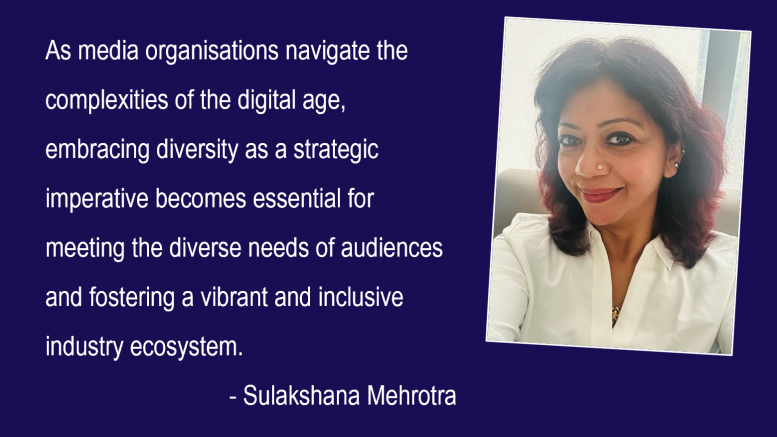In the contemporary business landscape, the principles of diversity, equity, inclusion and belonging (DEIB) world have gone beyond mere buzzwords; they are not only a moral imperative but also a smart business move, acknowledged by organisations worldwide as fundamental pillars of creating a thriving and sustainable workplace culture.
Today, recognising their profound impact, organisations prioritise DEIB initiatives to foster an environment where every individual feels valued, respected and ready to bring their A-game. Such endeavours aid businesses in their professional development, and perhaps more than ever before, help retain top talent and provide the necessary edge in a crowded marketplace, while also helping to drive innovation and business expansion into new markets.
A recent Valuvox poll of 11 Indian cities indicated that 77 per cent of business owners felt that disregarding DEIB could harm their organisation’s growth and performance. It is no longer a compliance issue to avoid legal hassles. With the workplace reinventing itself, especially following the COVID pandemic, DEIB has become pivotal to companies’ bottom line. According to a Forbes study, companies that prioritise gender diversity outperform their competitors by 15 per cent. And it gets better. Companies that promote and practice ethnic diversity are performing 35 per cent better than their competitors.
Innovative approaches
Companies are adopting novel techniques to promote diversity and inclusion. One such initiative is the emergence of Employee Resource Groups (ERGs), as an approach to dealing with a diverse and evolving workforce, ERGs have been quite effective as powerful platforms for fostering a sense of belief and community among employees with shared interests and backgrounds. Creating an environment that is inclusive and responsive makes these collectives indispensable. They allow individuals to flourish and advance in their careers, and promote debate and cooperation in a safe space.
I must mention here that diversity alone cannot bring about the changes that companies are seeking. Inclusion plays an integral part. Often, the terms ‘diversity’ and ‘inclusion’ are used interchangeably, yet they are not. Inclusion refers to a work environment that makes everyone feel welcomed, valued and respected. A great workplace is also a more productive workplace.
Integrated technologies
Advancements in technology significantly contribute to the promotion of diversity. With the rise of remote work, virtual reality (VR) and artificial intelligence (AI), businesses are harnessing these innovations to streamline diversity training, cultivate empathy and deepen cultural understanding among their workforce. Employees can immerse themselves in diverse viewpoints and get deeper insights into the ramifications of their behaviour on others. The organisation’s culture then is characterised by empathy and inclusivity.
Talent development
Besides technological advancements, companies are investing more resources in talent development initiatives to nurture the potential of their workforce and build inclusive work environments. Through offering avenues for honing skills, career advancement and undergoing leadership programmes, companies are not only drawing in top-tier professionals but also cultivating an environment where continuous learning and development are valued. Several recent studies have suggested that the majority of job seekers prefer a diverse workforce and this is a key condition for them in their job hunt. So, it makes perfect sense for businesses to pursue strategies that attract talented professionals.
DEIB shaping the future of media and communications in India
As media organisations navigate the complexities of the digital age, embracing diversity as a strategic imperative becomes essential for meeting the diverse needs of audiences and fostering a vibrant and inclusive industry ecosystem. The media and communications sector needs to recognise that diversity and inclusivity in the composition of their teams isn’t just a moral imperative – it’s essential for defining the future of the industry. In an era of digital transformation, diversity lies at the heart of their business. Moreover, with the industry grappling with brain drain and talent shortages, nurturing diversity is crucial for attracting and retaining top talent.
Future gazing
How does the landscape look down the road? In the foreseeable future the media and communications domains likely will witness heightened focused on genuine and intricate representation across varied narrative platforms, spanning from cinema and television to literature and digital content. Initiatives aimed at championing diversity and inclusivity will permeate every echelon of the media sector, encompassing entry-level roles as well as pathways to career growth, thereby guaranteeing access and better prospects to all employees.
In the coming years, technology will play a big role in increasing women’s positions in the communications sector. According to a study by Deloitte, a significant portion of current media and entertainment spending tied to inclusivity can be attributed to female audiences, highlighting their growing influence and purchasing power.
It must be asserted here that the future of diversity and inclusion in media will also be shaped by ongoing advocacy and activism both within the industry and in society at large. We all must be champions of diversity. Continuous advocacy of initiatives aimed at promoting diversity, equity and inclusion will drive a collective commitment to creating a more inclusive and representative media landscape.
The views and opinions published here belong to the author and do not necessarily reflect the views and opinions of the publisher.



Be the first to comment on "What is the future of diversity and inclusion?"